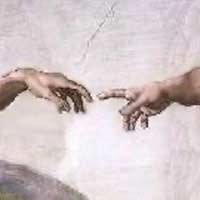Renaissance

The Renaissance period (from the 15th to 16th Century) is characterised by high innovation within both the arts and sciences. In terms of the development of thought and artistic style, it very much bridged the period between religious iconography and the enlightenment period/early Modernism.
Renaissance itself means ‘rebirth’ and it is during this period that artists and thinkers looked back to ancient Greek and Roman sources for inspiration. This in itself was radical as it opened up the possibility of making artistic references that were not specifically Christian. In line with this, the main thrust behind artistic development no longer had to refer principally to the representation of Christian ideals. This opened up possibilities and added to the development of technique which included ‘perspective’ (the rendering of pictorial space) and a greater understanding of anatomy.
The renaissance was a period of great cultural shifts and coincided with the Protestant Reformation, led by German Martin Luther. During this period a challenge to the authority of the Catholic Church, manifested itself in greater individual creative freedom. This can clearly be seen in the works of artists such as Leonardo da Vinci, Michelangelo and Raphael.
Artists such as these were known for their incredible devotion to their work, and their stubbornness. Michelangelo famously came to logger-heads with members of the clergy who were concerned over his depiction of nudity in his ‘Last Judgement’, painted for the Sistine Chapel. Michelangelo was unmoved by the objections, though the nudes were over-painted following his death – with fig leaves covering their modesty! This story goes to show, that whilst the renaissance was revolutionary, it was very much an early period in the development running from iconography to contemporary (or Postmodern) art.
Collectors and Patrons
With the rise of the individual artists came the rise of the individual collector. Popes, monarchs, nobility and notable families began to define themselves by their cultural legacy in a way unseen since antiquity. It became very en vogue to support the radical new changes that occurred during the Renaissance period. Though, arguably the patronage of hugely wealthy families such as the Medici’s was possibly instrumental in the development of the creative Renaissance in the first place. The rise of the individual genius was very much due to the economic freedom that artists such as Michelangelo were offered by the Medici family. This kind of relationship continued for successive generations with three members of the Medici family even becoming Pope, giving them unprecedented influence culturally.Renaissance Collections Today
Today Renaissance art is highly prized and valued, with many national collections priding themselves on their Renaissance acquisitions. In 2004 the National Gallery, London, proudly announced its acquisition of Raphael's ‘Madonna of the Pinks’ bought for £35 million (minus tax relief).The recent success of Dan Brown’s ‘The Da Vinci Code’ has renewed public thirst for information on the Renaissance period, and this perhaps marks a backlash against the shallow tedium that contemporary art sometimes presents.
The Renaissance period looks set to captivate art audiences long into the future, and whilst owning a Renaissance work is way beyond the means of most collectors, a trip to any major collection can help to contextualise a period that Modern and contemporary art owes its existence to.








